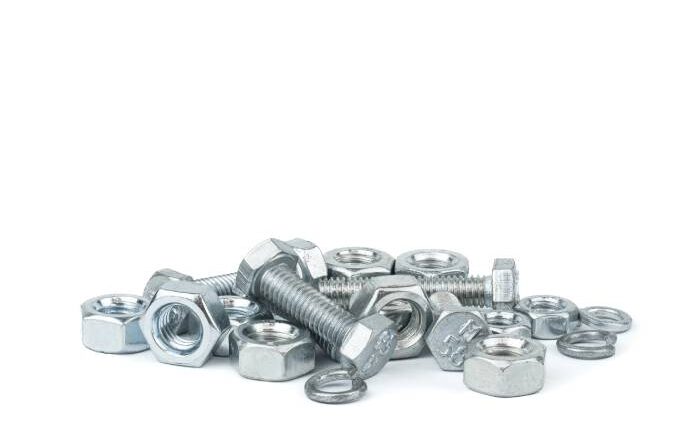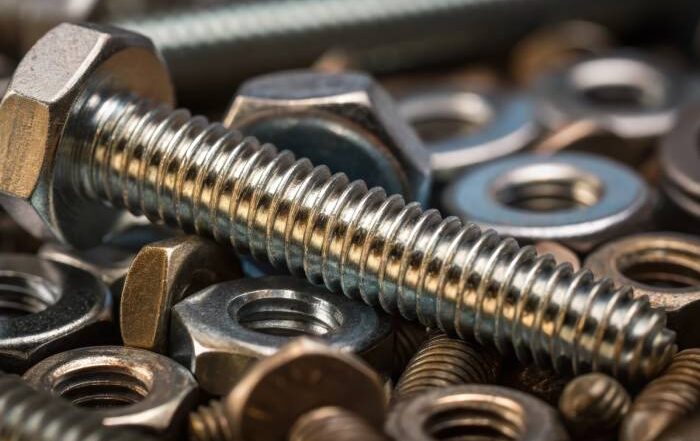
Can stainless steel and aluminum be used together? This is a common question, as combining these two metals can lead to corrosion under certain conditions.
Understanding Stainless Steel and Aluminum Corrosion
Corrosion develops when two dissimilar materials are combined in a corrosive electrolyte. A common question arises: does stainless steel react with aluminum? The answer is yes—this reaction occurs when aluminum comes into contact with stainless steel, potentially leading to galvanic corrosion.
Although aluminum reacts negatively to stainless steel, large surface areas of aluminum to stainless steel can be acceptable depending on local environmental conditions. Severe corrosion is likely to take place in a marine environment. However, there are methods that can be used to reduce this effect. A good way to reduce corrosion is to use an isolating coating or paint on the aluminum and the steel to isolate them electrically. Insulating washers are also effective in isolating the two dissimilar materials and creating a relatively safe surface area.
In addition to corrosion, discoloration of stainless steel, known as “tea staining,” may occur when it is combined with aluminum. This rust-colored staining results from the formation of aluminum oxide on the surface and can compromise both the appearance and durability of the materials. Regular maintenance, proper insulation, and the use of passivation—a process that improves the corrosion resistance of stainless steel—can effectively address these issues and maintain both aesthetic and structural integrity.
Can Stainless Steel and Aluminum Be Safely Used Together?
Customers often ask whether it’s possible or advisable to use stainless steel fasteners with aluminum. It’s well known that bringing the two metals into contact can cause corrosion. Corrosion occurs through a process called galvanic corrosion, where two dissimilar metals come into contact in a corrosive electrolyte (such as water or saltwater). In this scenario, aluminum acts as the anode (the metal that corrodes), and stainless steel serves as the cathode (the metal that remains protected). The difference in their electrochemical properties drives the corrosion process. However, there are ways to use stainless steel and aluminum together while preventing corrosion.
How to Prevent Galvanic Corrosion Between Aluminum and Stainless Steel
The most common solution to prevent galvanic corrosion between stainless steel and aluminum is to select metals that are close together in the galvanic series. Separating the metals that are incompatible reduces the risk of these cells deteriorating. According to the levels of galvanic corrosion, stainless steel that comes into contact with materials such as copper is less likely to be a risk than when it is in contact with aluminum. The presence of chromium in stainless steel enhances its corrosion resistance by forming a protective oxide layer on its surface, which helps mitigate the effects of galvanic corrosion when in contact with aluminum. Stainless steel alloys like 304 stainless steel, which have high tensile strength, are less prone to corrosion compared to more anodic metals like aluminum, especially when exposed to water or saltwater. Zinc, for example, is more likely to corrode, acting as a sacrificial anode in galvanic corrosion, while stainless steel remains unaffected.
Using coatings or insulation to separate the metals is another effective strategy. Non-absorbent materials, such as rubber or plastic gaskets, can be placed between the two surfaces to prevent electrical contact. In harsh environments, especially those with high salinity, additional steps such as priming the surfaces with protective coatings or using corrosion-inhibiting materials under bolt and screw heads can further safeguard against deterioration.
Aluminum and Stainless Steel Reaction
Although aluminum reacts negatively to stainless steel, large surface areas of aluminum to stainless steel can be acceptable depending on local environmental conditions. An example of the safe use of stainless steel fasteners with aluminum would be where stainless steel bolts are used to secure aluminum roadway parapet guards. In this case, the surface area of the aluminum is so large relative to the surface area of the stainless steel bolts that, there is a very low risk of major corrosion.
Severe corrosion is likely to take place in a marine environment. However, there are methods that can be used to reduce this effect. A good way to reduce corrosion is to use an isolating coating or paint on the aluminum and the steel to isolate them electrically. Insulating washers are also effective in isolating the two dissimilar materials and creating a relatively safe surface area.
How to Tell the Difference Between Aluminum and Stainless Steel
Not sure what materials you’re dealing with? It’s usually possible to tell the difference between aluminum and stainless steel by sight, as the former has a duller appearance. Aluminum is also much lighter and softer than steel. However, it isn’t always so obvious; it depends on the alloys in question. Different manufacturing processes can create different appearances and finishes.
One way to be sure is to use the key test. Take a key and drag it along a flat surface. If the surface is aluminum, it will scratch quite deeply without too much pressure, since aluminum is much softer than steel. The steel will not scratch at all or only superficially.
What to Put Between Steel and Aluminum
When bringing aluminum and steel into contact, it’s essential to prevent corrosion by using an insulating material to separate the two metals. One effective solution is to use a thin plate of non-absorbent material, such as rubber, plastic, or even a specialized insulating gasket. These materials act as barriers to prevent direct electrical contact, which is crucial in reducing the risk of galvanic corrosion. Plastic or rubber washers or gaskets are also excellent options, as they can be placed between fasteners and the metals themselves, providing an extra layer of protection.
Another option is the application of a thin, corrosion-resistant coating, such as a layer of epoxy or a specific anti-corrosion primer, applied to both the steel and aluminum surfaces before assembly. This creates a protective barrier that prevents direct metal-to-metal contact and further enhances the protection against oxidation and rust. Additionally, these coatings can be customized to suit various environmental conditions, ensuring greater longevity and performance of the materials.
By using these insulating materials and coatings, you can significantly reduce the risk of corrosion and extend the lifespan of components that involve the interaction of aluminum and steel. Regular maintenance and inspections are also recommended to ensure that the protective barriers remain intact and effective over time.
How to Attach Aluminum to Steel
While it is relatively safe to use stainless steel fasteners on large aluminum surfaces, the opposite is not true. If you use aluminum rivets or other fasteners to join large steel pieces, corrosion will set in and destroy the fasteners, ultimately causing the parts to come loose.
When the pieces being joined are structural, use the strongest fasteners you can find. For example, when joining aluminum and steel, choose carbon steel bolts.
When bringing aluminum and steel into contact, you can also use a thin layer of non-absorbent insulation between them. Rubber or plastic can work, depending on the application. You can also use polypropylene tape or prime the parts with a protective coating. Even with such treatments having been done, you should use a corrosion-inhibiting material of some kind—such as pastes, washers, etc.—under the heads of bolts and screws as a further preventive measure.
As a leading stainless steel fastener specialist offering a full range of stainless steel screws, bolts, washers, and other components for aluminum and steel applications across all industries, Marsh Fasteners provides high-quality solutions to help you address potential corrosion concerns when using stainless steel and aluminum together. Contact us today to learn more about how we can assist you



